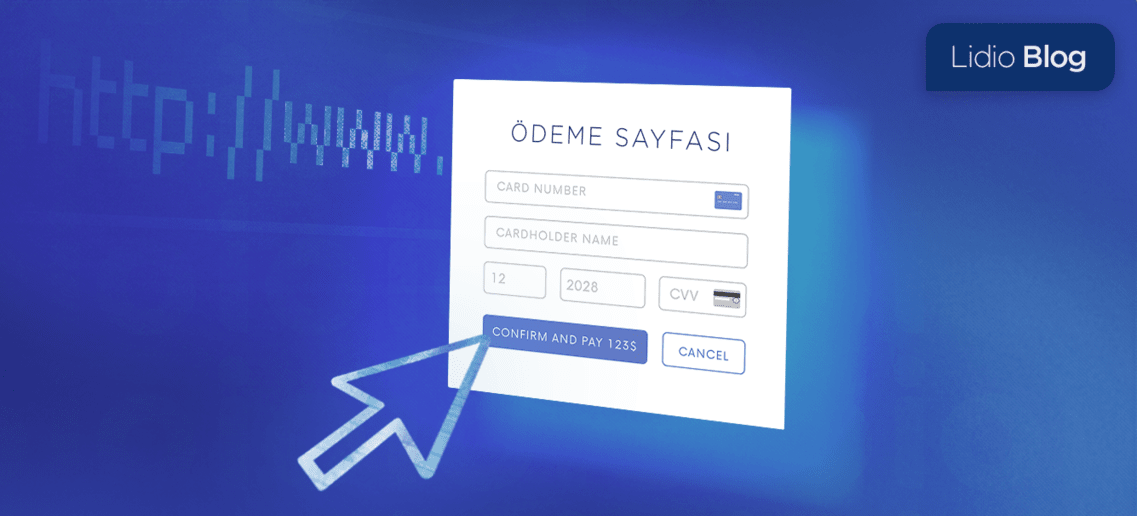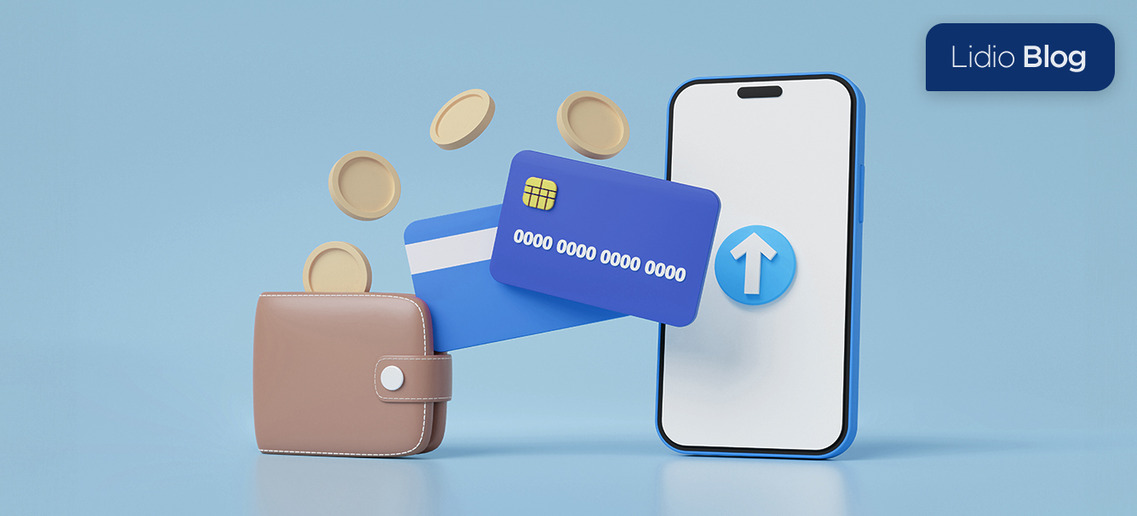
CVV Kodu Nedir?
CVV Kodu Nedir? Neden önemlidir? Öğrenmek için blog yazımızı zirayet edin!...
Provizyon Nedir? Provizyon Ne İçin Kullanılır? Öğrenmek için blog yazımızı ziyaret edin!

Ön otorizasyon adımı olarak ifade edilebilen provizyon, online ödeme sektöründe önemli bir role sahiptir. Banka veya kredi kartı gibi ödeme yöntemleriyle işlem gerçekleştirilirken geçici olarak alınan onay ya da izin provizyon olarak adlandırılır. Provizyon, kartlı ödemelerde bankanın, satın alma işleminin gerçekleşebilmesi için önceden onay vermesi sürecidir. Bu işlem, alışverişin güvenliğini sağlamak ve kartın geçerli olduğunu doğrulamak amacıyla yapılır. Provizyon bir diğer anlatım şekliyle satın alma tutarının kart sahibinin hesabında bloke edilmesi anlamına gelir.
Provizyon sorgulama, genellikle bankaların internet şubesi, mobil uygulamaları veya müşteri hizmetleri üzerinden yapılabilir. Kart sahipleri, bu kanalları kullanarak yapılan işlemlere ilişkin provizyon bilgilerini kontrol edebilirler.
Provizyon alma işlemi, yaptığınız alışveriş sonrasında ödediğiniz tutarın ilgili banka tarafından onaylanmasını ifade eder. Bu işlem, elektronik ortam üzerinden banka tarafından gerçekleştirilir. Provizyon nasıl alınır diye düşünüyorsanız iade ve iptal işlemi yapmıyorsanız sürecin otomatik olarak gerçekleştirileceğini bilmeniz yeterli olur. POS cihazından provizyon alma işleminde pasif bir rolünüz bulunurken iptal ve iade sürecinde ise aktif bir rol almanız gerekir.
Bekleyen provizyon, bankanın bir ödeme işlemi için onay verdiği ancak işlemin henüz nihai olarak tamamlanmadığı durumu ifade eder. Bu süreçte, ilgili tutar kart sahibinin kullanılabilir bakiyesinden düşülür ancak henüz satıcıya aktarılmaz. Yapılan bu işlem sayesinde hem satıcıların hem de müşterilerin mağduriyet yaşaması önlenir.
Evet, bekleyen provizyon iptali mümkündür. Eğer bir alışveriş iptal edilirse veya işlem tamamlanamazsa, banka provizyonu otomatik olarak serbest bırakır. İptal süreci, bankadan bankaya değişiklik gösterebilir. Bunun için ilgili bankanın müşteri hizmetleriyle iletişime geçerek bekleyen provizyonun iptal işlemini hızlıca gerçekleştirebilirsiniz.
Provizyon kodu, her bir provizyon işlemi için banka tarafından oluşturulan ve işlemi takip etmekte kullanılan benzersiz bir numaradır. Bu kod, işlem detaylarının sorgulanması için kullanılabilir.
Ön provizyon, özellikle otel rezervasyonları ve araç kiralama gibi hizmetlerde, hizmetin kullanılacağı tarih öncesinde alınan geçici bir ödeme onayıdır. Bu, hizmet sağlayıcının bir garanti elde etmesini sağlar.
Açık provizyon, henüz çekilmemiş ancak banka tarafından onaylanmış ödeme tutarının, belirli bir süre boyunca kart sahibinin hesabında bloke edilmesi durumudur.
Posta ile provizyon, genellikle telefon veya posta yoluyla yapılan siparişlerde kullanılan bir ödeme onayı sürecidir. Bu yöntemde, müşteri kart bilgilerini sözlü olarak veya yazılı olarak sağlar.
Sanal kart bekleyen provizyon, sanal kartlar kullanılarak yapılan online alışveriş işlemlerinde, işlemin onay sürecinin bir parçasıdır. Sanal kartlar, tek kullanımlık veya belirli bir süre için geçerli olan kart numaralarıdır.
Kredi kartı provizyonu , kredi kartı ile yapılan alışveriş işlemlerinde, bankanın işlemi onaylaması sürecidir. Bu, satıcının ödemenin güvende olduğundan emin olmasını sağlar.
Provizyon ücreti , bazı durumlarda, özellikle uluslararası işlemler veya belirli hizmetler için, bankaların provizyon işlemi için talep edebileceği ücrettir. Ancak, çoğu standart alışveriş işlemi için provizyon ücreti alınmaz.

CVV Kodu Nedir? Neden önemlidir? Öğrenmek için blog yazımızı zirayet edin!...

Provizyon Nedir? Provizyon Ne İçin Kullanılır? Öğrenmek için blog yazımızı ziyaret edin!...

QR Kod Nedir? QR Kod Ne İçin Kullanılır? Öğrenmek için blog yazımızı zirayet edin!...

Linkle ödeme nedir, linkle ödeme sistemi nasıl çalışır, avantajları nelerdir, ve linkle ödeme nasıl alınır merak ediyorsanız detaylı bilgi için blog yazımızı okuyun!...

Ödeme sistemleri, online mağazalarınızda müşterilerinizden ödeme almak için kullanılan finansal teknolojilerin tümüne verilen addır. Detaylı bilgi için web sitemizi ziyaret edin!...

Ödeme sayfası nedir, sayfa güvenliği nasıl anlaşılır, ödeme sürecinin güvenli olduğundan emin olma yolları nelerdir hakkında detaylı bilgi için blog yazımızı okuyun. ...

Startup Nedir? Startup nasıl kurulur öğrenmek için blog yazımızı zirayet edin!...

Check Out Nedir? Neden önemlidir öğrenmek için blog yazımızı zirayet edin!...

Dijital Cüzdan Nedir? ? Neden önemlidir öğrenmek için blog yazımızı zirayet edin!...

E-Tahsilat Nedir? E-Tahsilat Ne İçin Kullanılır? Öğrenmek için blog yazımızı zirayet edin!...

İnternet alışverişinde tüketicilerin hakları nelerdir, kabul edilen sözleşmeler neyi ifade eder detayları ile öğrenmek için blog yazımıza göz atın!...

Sanal POS hakkında tüm bilmeniz gerekenler: Öğrenmek için blog yazımıza göz atın!...

Sepeti terk etme oranları işletmeler için neden önemlidir, nasıl minimize edilir öğrenmek için blog yazımıza göz atın!...

Geleneksel ödemelerden açık bankacılığa finansal serbestleşme nedir ve neden önemlidir öğrenmek için blog yazımıza göz atın!...

Uluslararası ödemeler nasıl gerçekleştirilir, hangi yöntemler kullanılır öğrenmek için blog yazımıza göz atın!...

Ödeme alma sürecinde tahsilatları tek ekrandan yönetmek işletmelere ne gibi avantajlar sağlar öğrenmek için blog yazımıza göz atın!...

ERP nedir, POS ve hesap hareket takibi nasıl yapılır öğrenmek için blog yazımıza göz atın!...

Issuer, Acquirer ve PSP kavramları nelerdir, PSP seçimi neden önemlidir öğrenmek için blog yazımıza göz atın!...

İnternetten yapılan alışverişlerde dolandırıcılığa karşı kullanılan güvenlik önlemleri nelerdir öğrenmek için blog yazımıza göz atın!...

E-ticarette online satış yapmanın püf noktaları nelerdir, tüketici deneyimi nasıl iyileştirilir öğrenmek için blog yazımıza göz atın!...

Açık bankacılık nedir, işletmelere nasıl avantajlar sağlar öğrenmek için blog yazımıza göz atın!...

Güvenli online alışverişin şifresi: 3D Secure Ödeme nedir, ne işe yarar öğrenmek için blog yazımıza göz atın!...

Kredi kartı, kapıda ödeme, havale/kredi, mobil ödeme gibi alternatif ödeme yöntemleri nelerdir, nasıl kullanılır öğrenmek için blog yazımıza göz atın!...